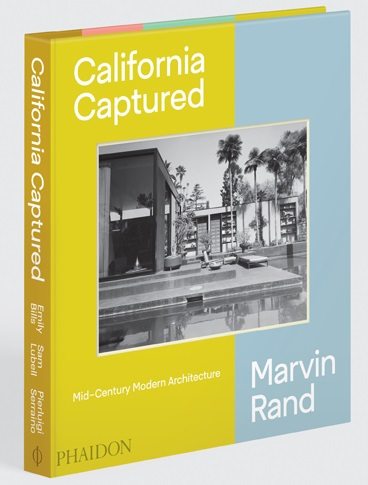The Style and Mythology of Mid-Century Modern California Architecture as Seen Through the Expert Lens of Marvin Rand
Urban studies professor Emily Bills has long had a fascination with the architectural history of the United States. Most recently, she has turned that interest toward Los Angeles photographer Marvin Rand who created some of the most iconic images of some of the most celebrated architectural creations of his time, photographing the mid-century modern creations of Southern California. She’s co-authored a new book “California Captured: Mid-Century Modern Architecture, Marvin Rand” (Phaidon) with Sam Lubell and Pierluigi Serraino.
We spoke to Dr. Bills about Marvin Rand as well as the “California mystique” behind the mid-century modernist movement.
What got you interested in Marvin Rand? Can you talk a bit about the importance of his work?
I became interested in Marvin Rand while doing my post doctorate work in the Esther McCoy Papers at the Smithsonian Institution. McCoy was an architectural historian who was largely responsible for putting Southern California modern architecture on the map. She encouraged Rand to photograph buildings for the articles she was writing for Arts + Architecture Magazine and the Los Angeles Times Home Magazine, as well as her book “Five California Architects.”
He soon became one of the two most important architectural photographers capturing mid-century modern architecture in Southern California, the other being Julius Shulman. Rand’s photographs were published in dozens of journals and had an international viewership, making him a key figure in promoting how we understand architecture from this period, even today. He has photographed work by Charles and Ray Eames, Rudolph Schindler, Gregory Ain, Killingsworth, Brady, Smith, Lutah Maria Riggs, Smith and Williams, William Pereira, and many others. He was also the main photographer for Craig Ellwood and Welton Becket, so most of us understood their work through his lens.
Your work has focused a lot on mid-century modern architecture. Can you talk a bit about its place in history and why you think it has become so iconic and so attached to the ‘California mystique?’
I think the “California mystique” is partially the outcome of a passionate group of historians, journalists, photographers, and editors who struggled in the 1950s to garner attention for Southern California-based architecture. Much of the architecture profession focused on New York and Europe at that time, but our region was incredibly rich in technological experimentation and sensitivity to local environmental conditions. With their efforts, Los Angeles soon became a destination point for architecture students, and the East Coast establishment took notice. Rand was a key player in this process, but his photographs didn’t evoke “lifestyle” in the way Julius Shulman or Maynard Parker’s work did. He was concerned with the structure itself and had a beautiful graphic sensibility.
Many architecture magazine editors preferred his work because of his skill at depicting the building. He also developed all of his own photographs, something unique even at the time. This meant he had complete control of the image, and the resulting quality was much admired by architects. Martin Brower, the head of public relations at Welton Becket & Associates, used to keep one of Marvin’s photographs in his office to show other photographers how the firm wanted their buildings represented.
What also sets Rand apart from other photographers at that time was the scope of his work. He was passionate about the work of proto-modernists Irving Gill and Greene and Greene and, while other mid-century photographers hung up their cameras when late modernism transitioned into postmodernism, Rand stayed interested, photographing early Frank Gehry, Morphosis, Eric Owen Moss, and others. He also dedicated much of his career to photographing work threatened by demolition, contributing to Historic American Building Surveys that were responsible for preserving some of our most canonical structures, such as the Bradbury Building and Watts Towers.
While our book focuses on his mid-century modernism work, the Rand Archive, which is still in family hands, has over 50,000 negatives covering these subjects. It was a daunting project to narrow down all of those photographs to the selection for “California Captured,” and I think there is still plenty of material for another book!
